


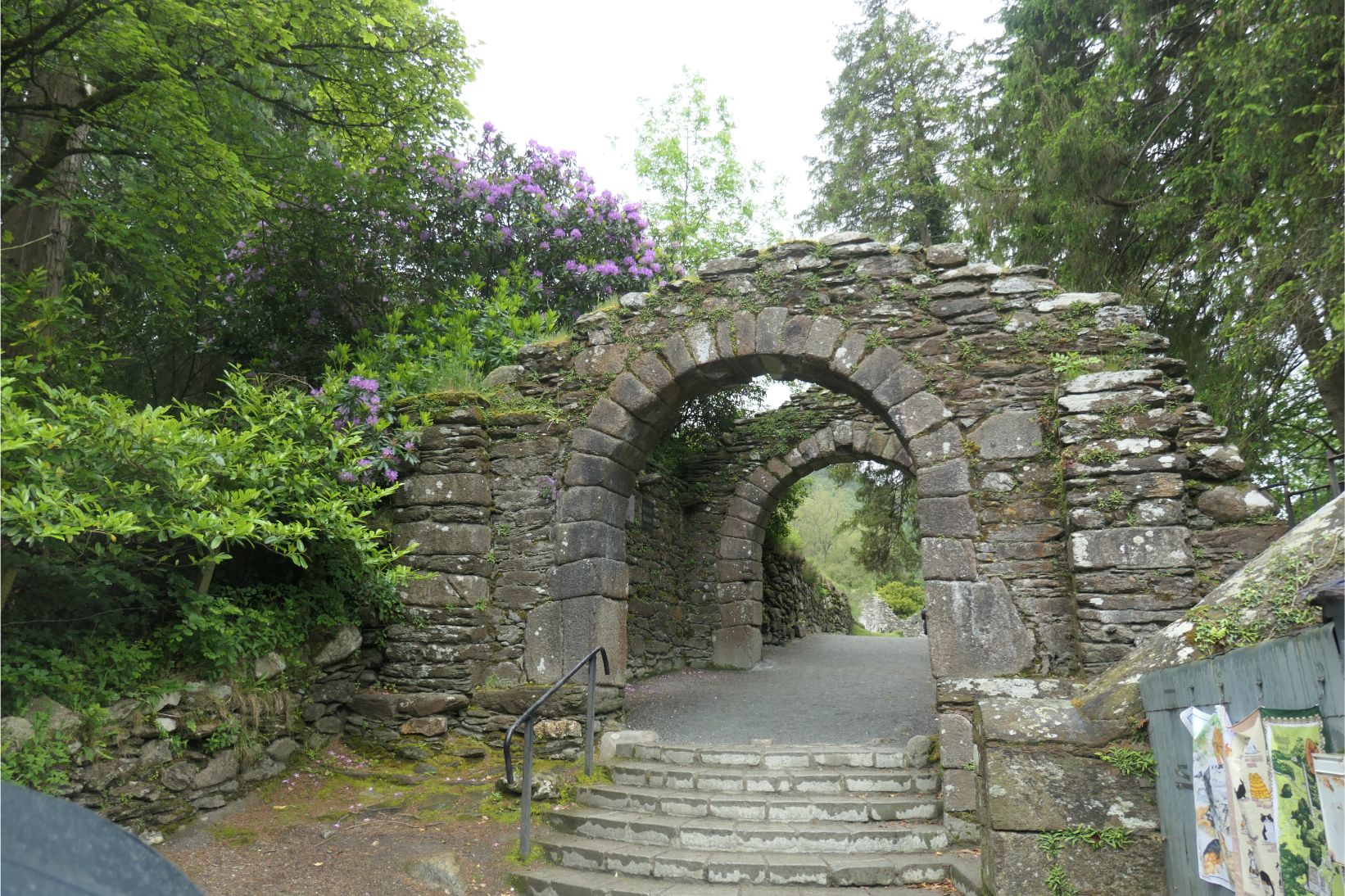

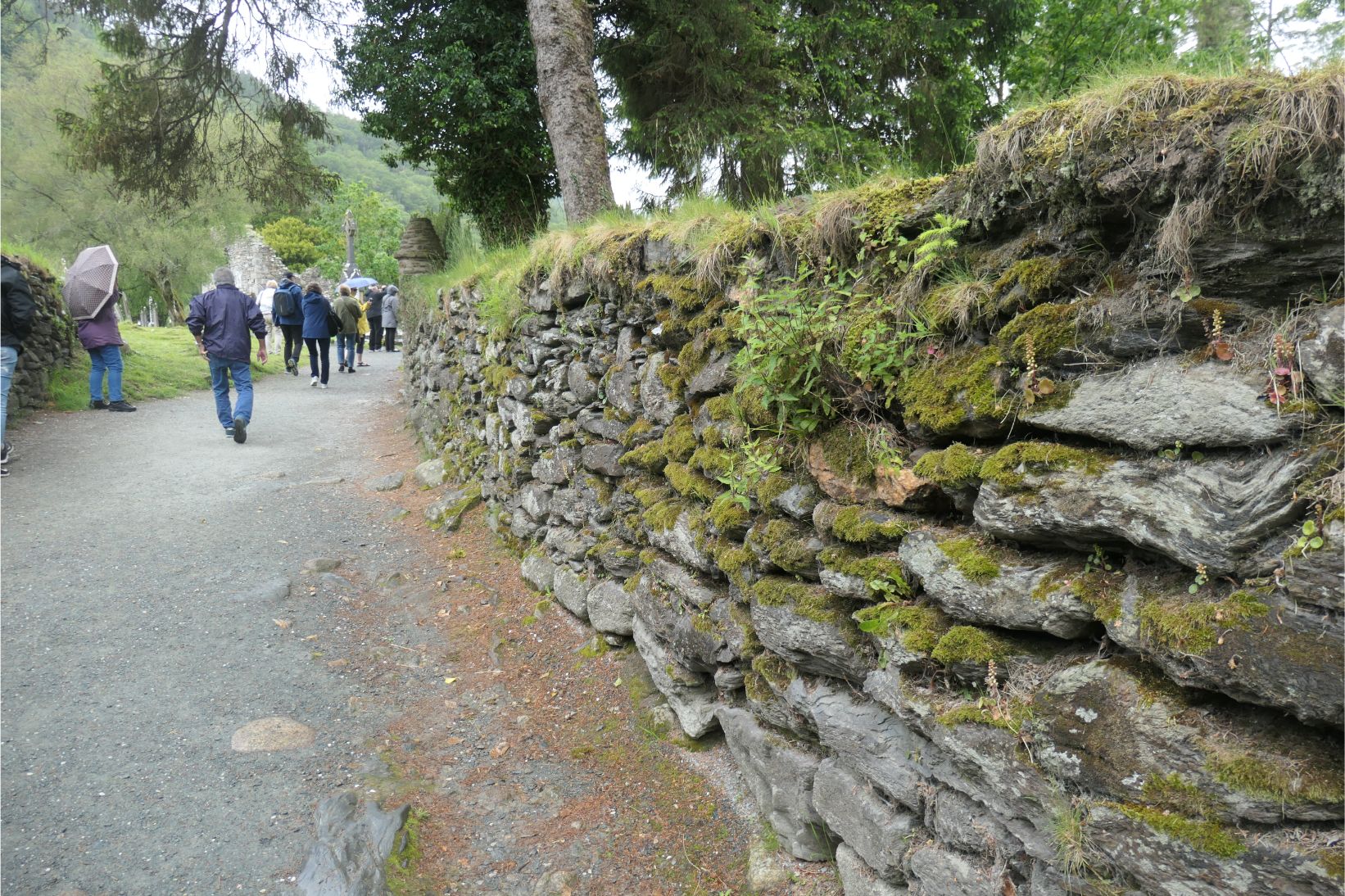
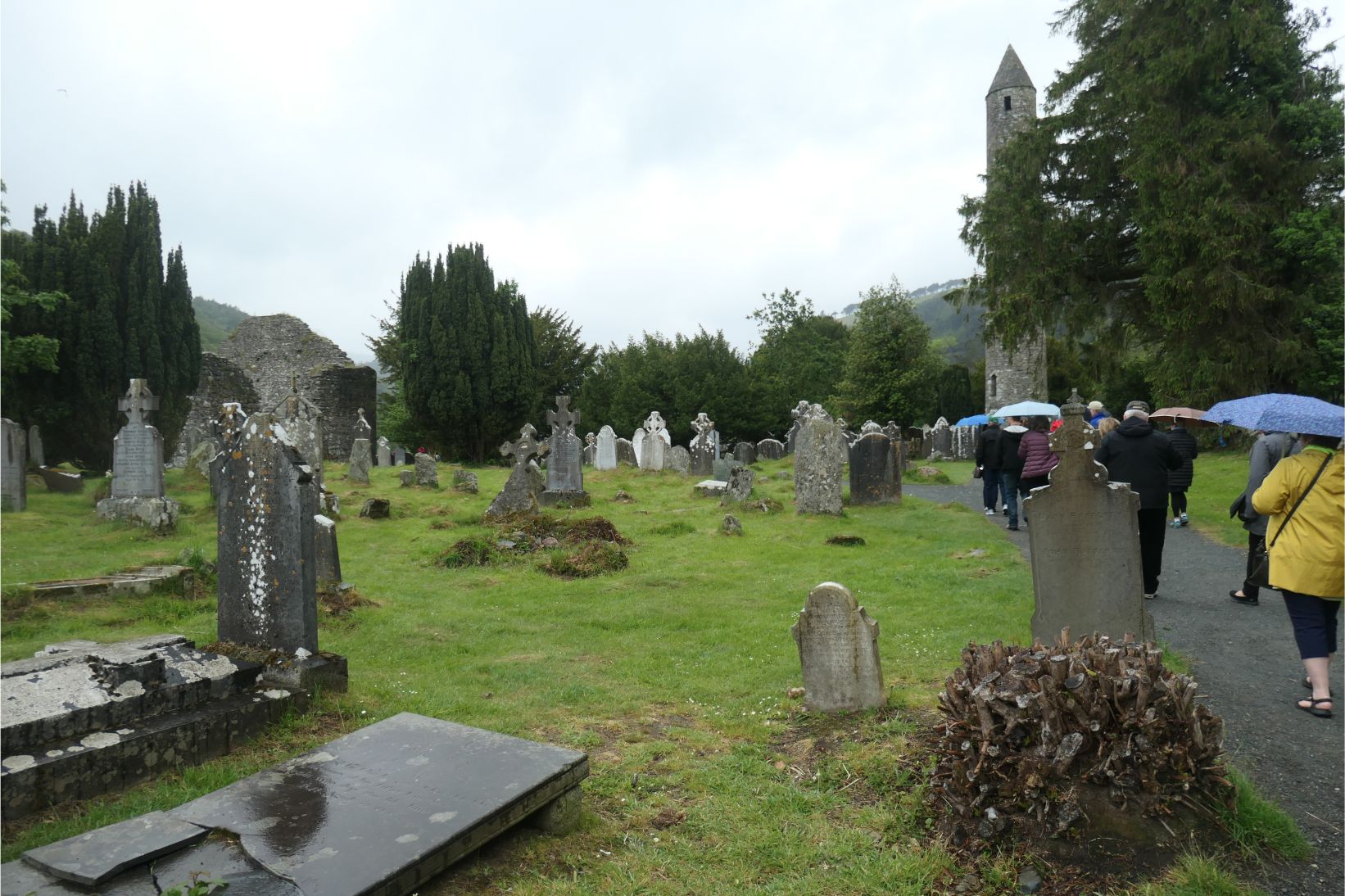

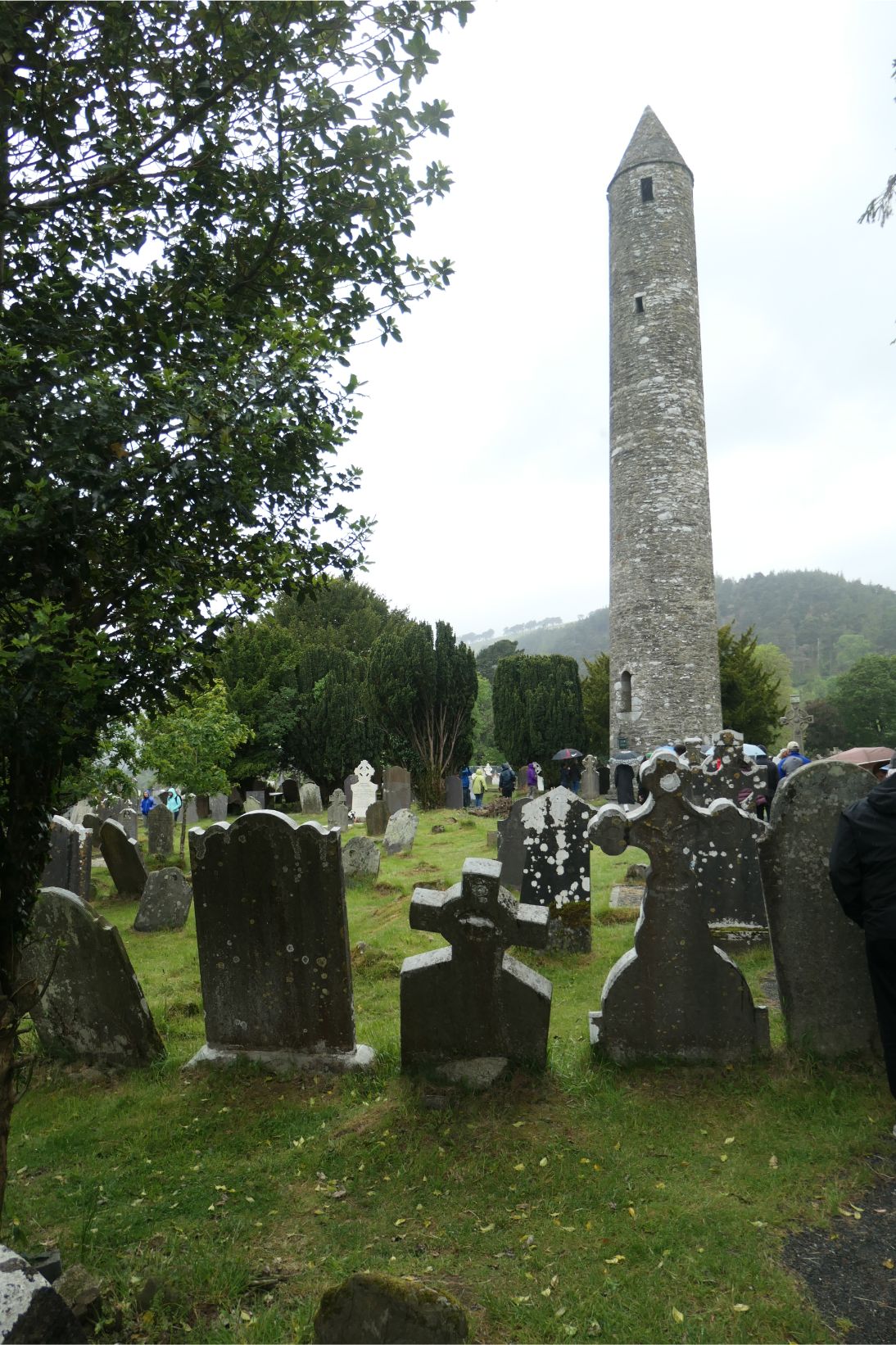
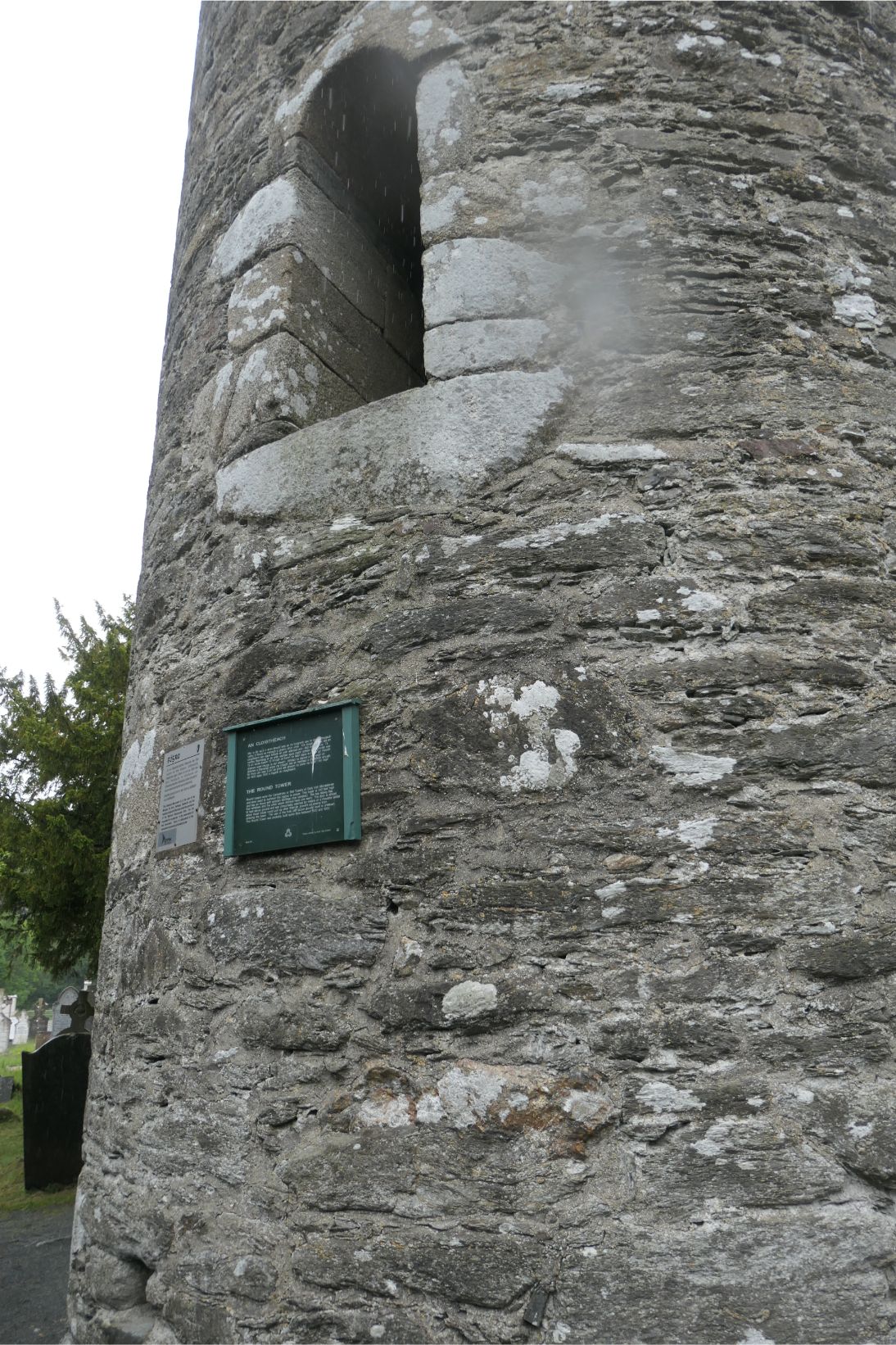


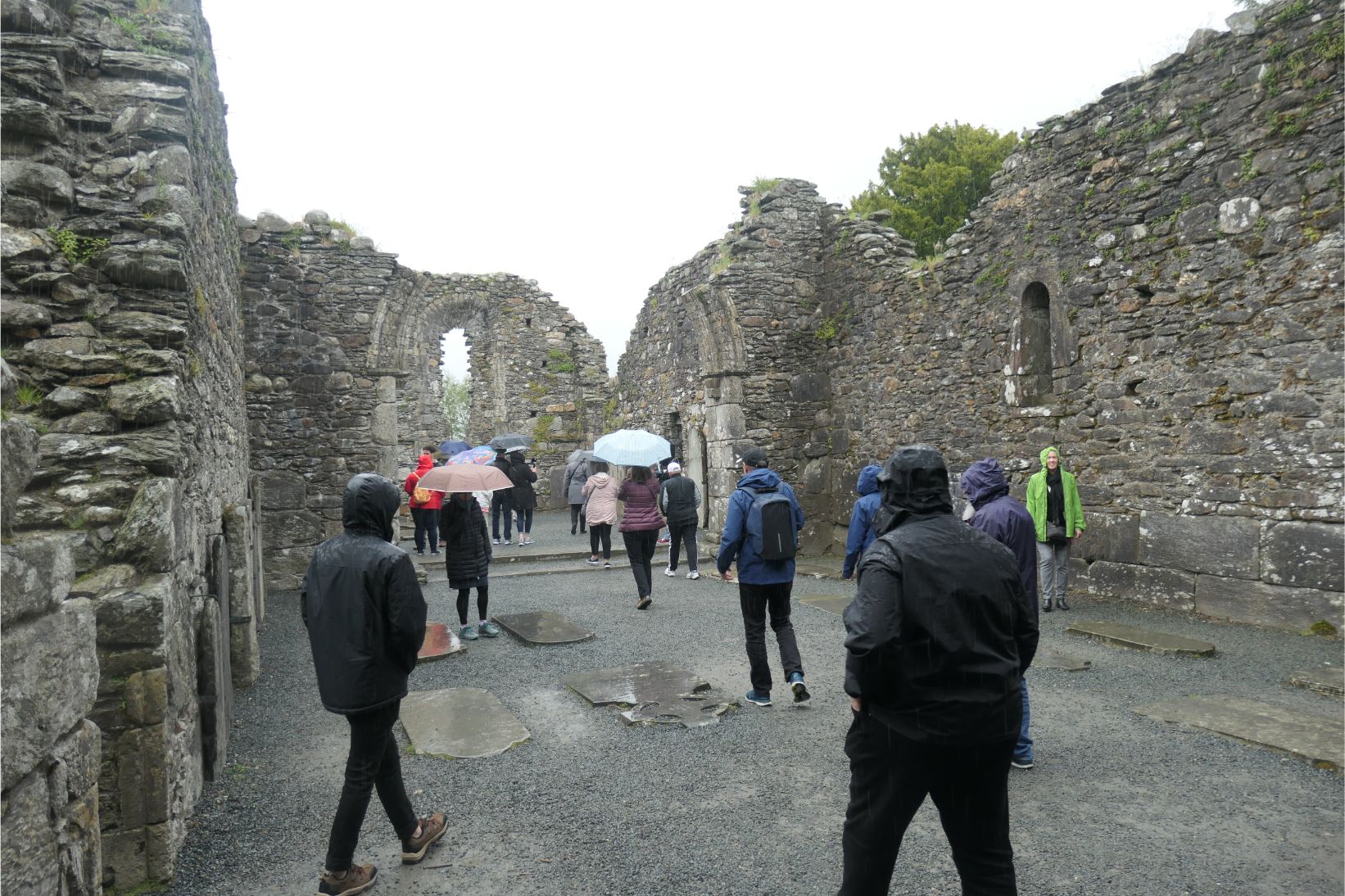


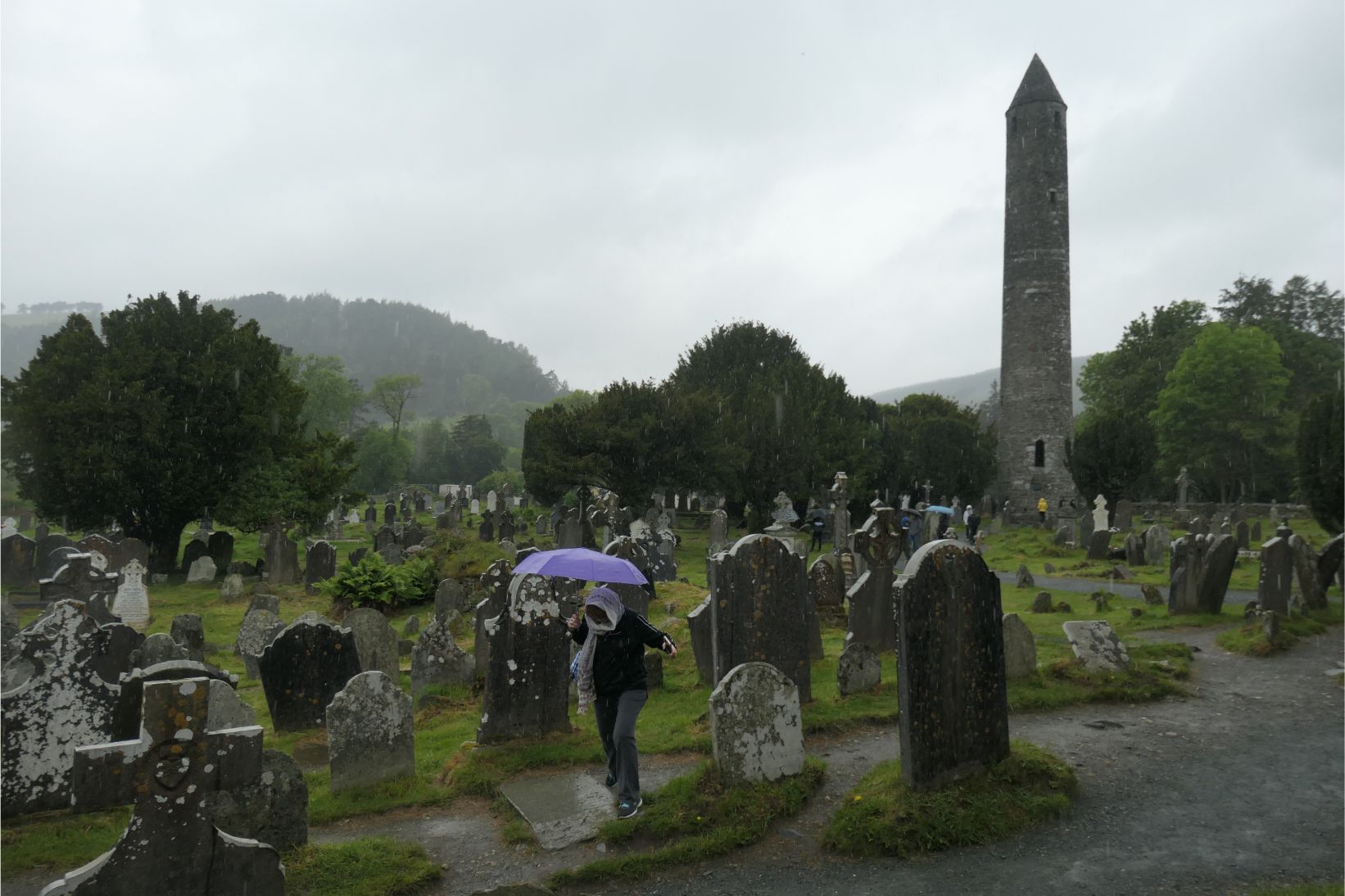
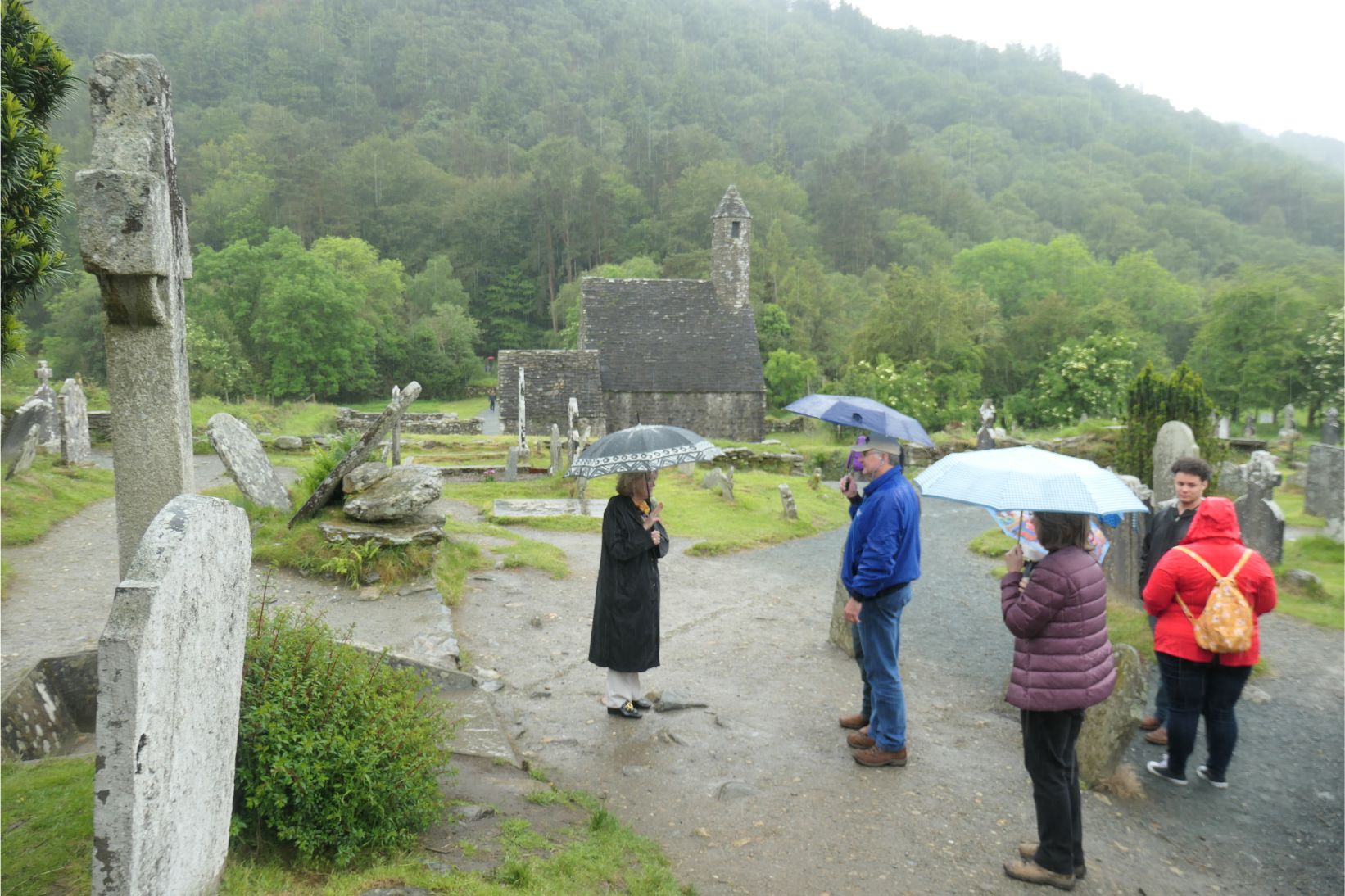
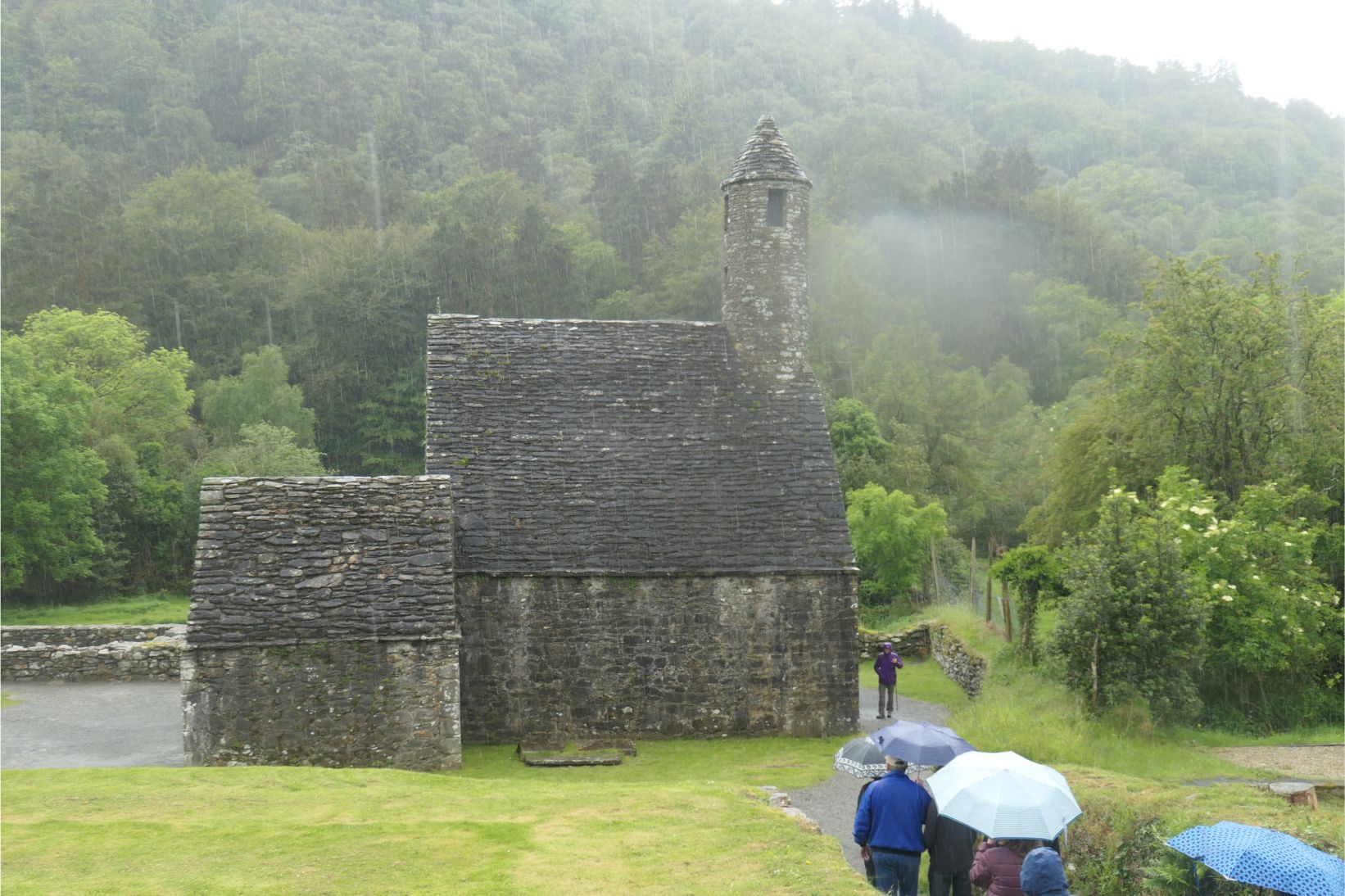

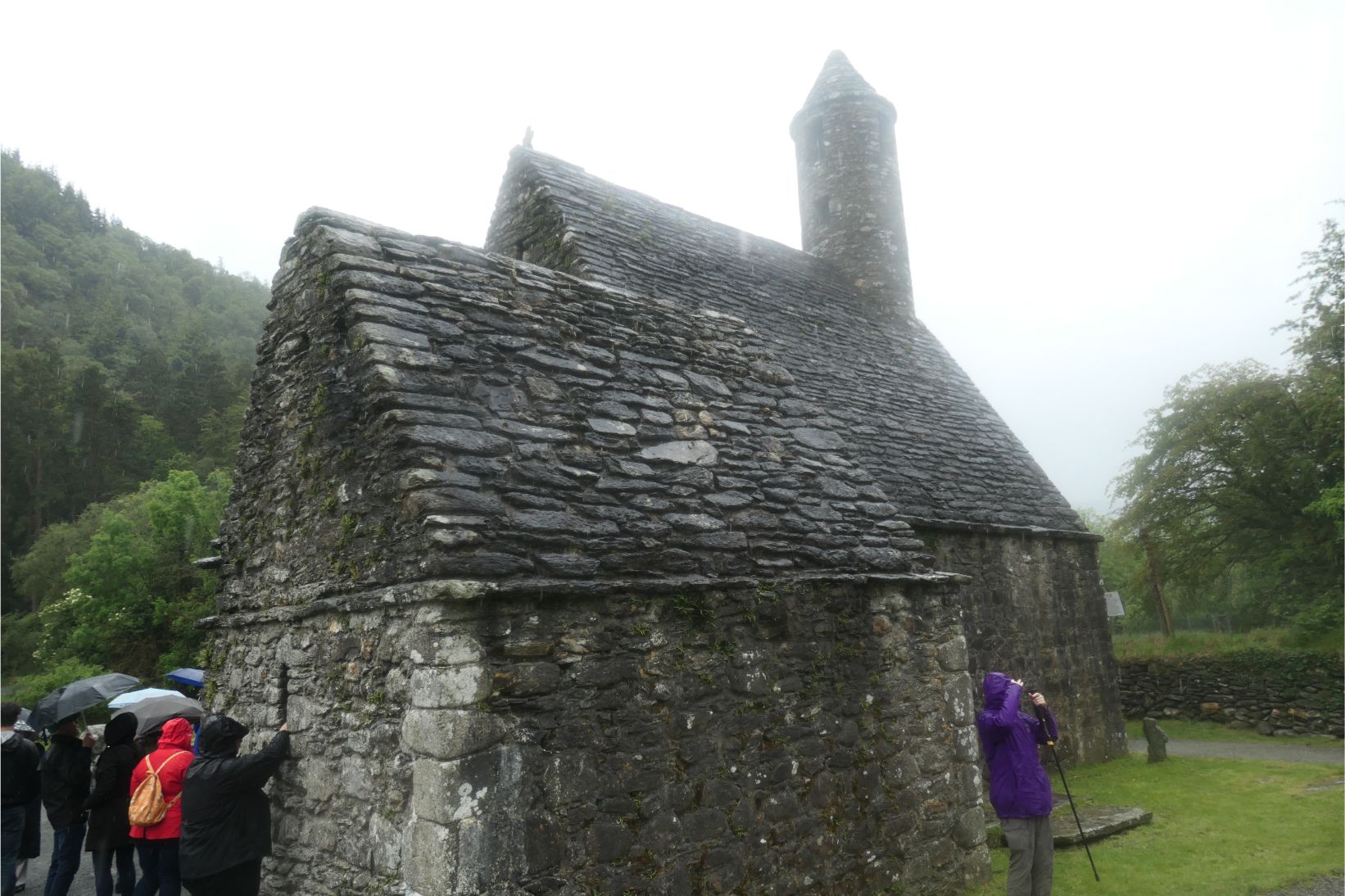
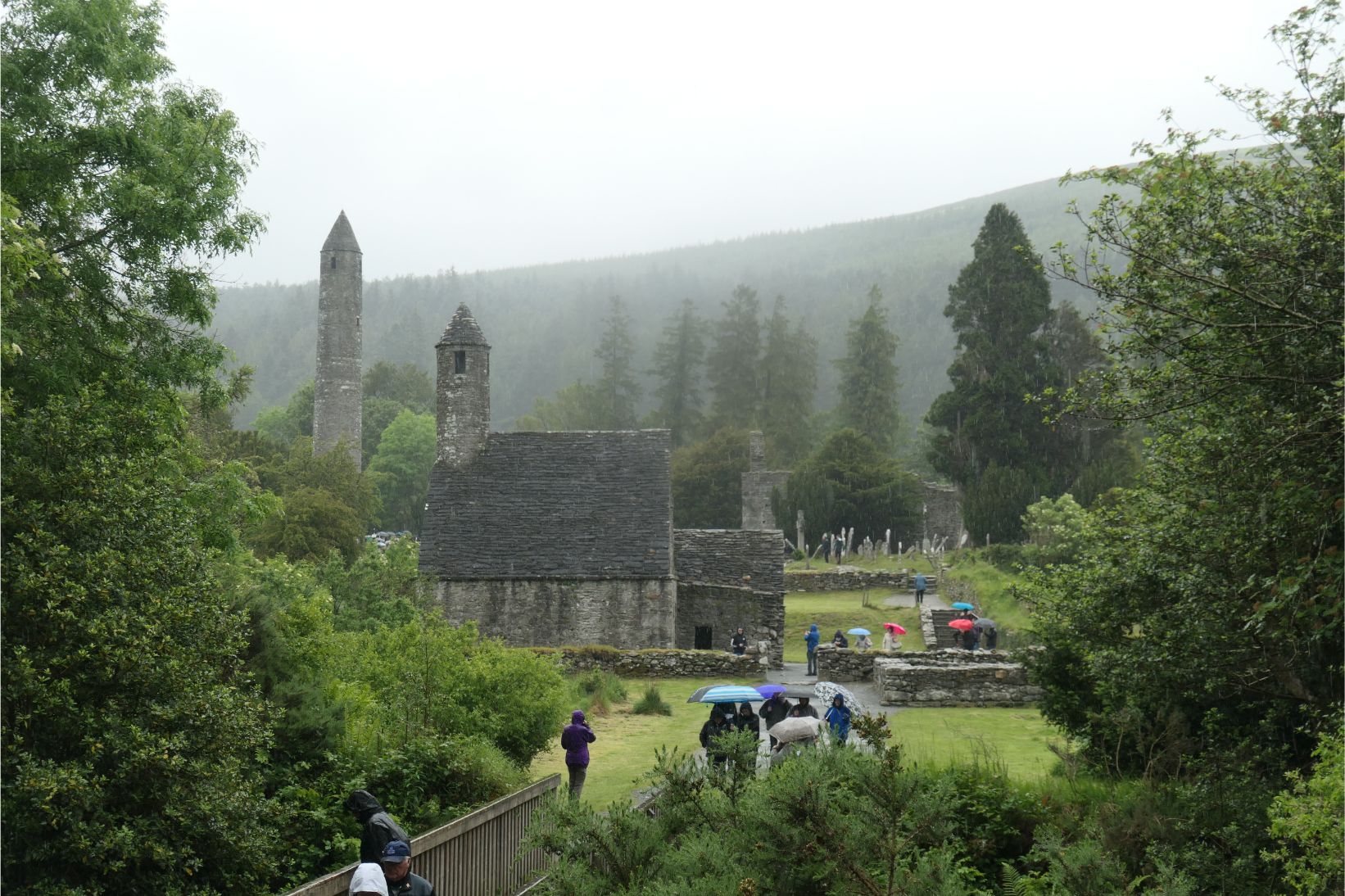

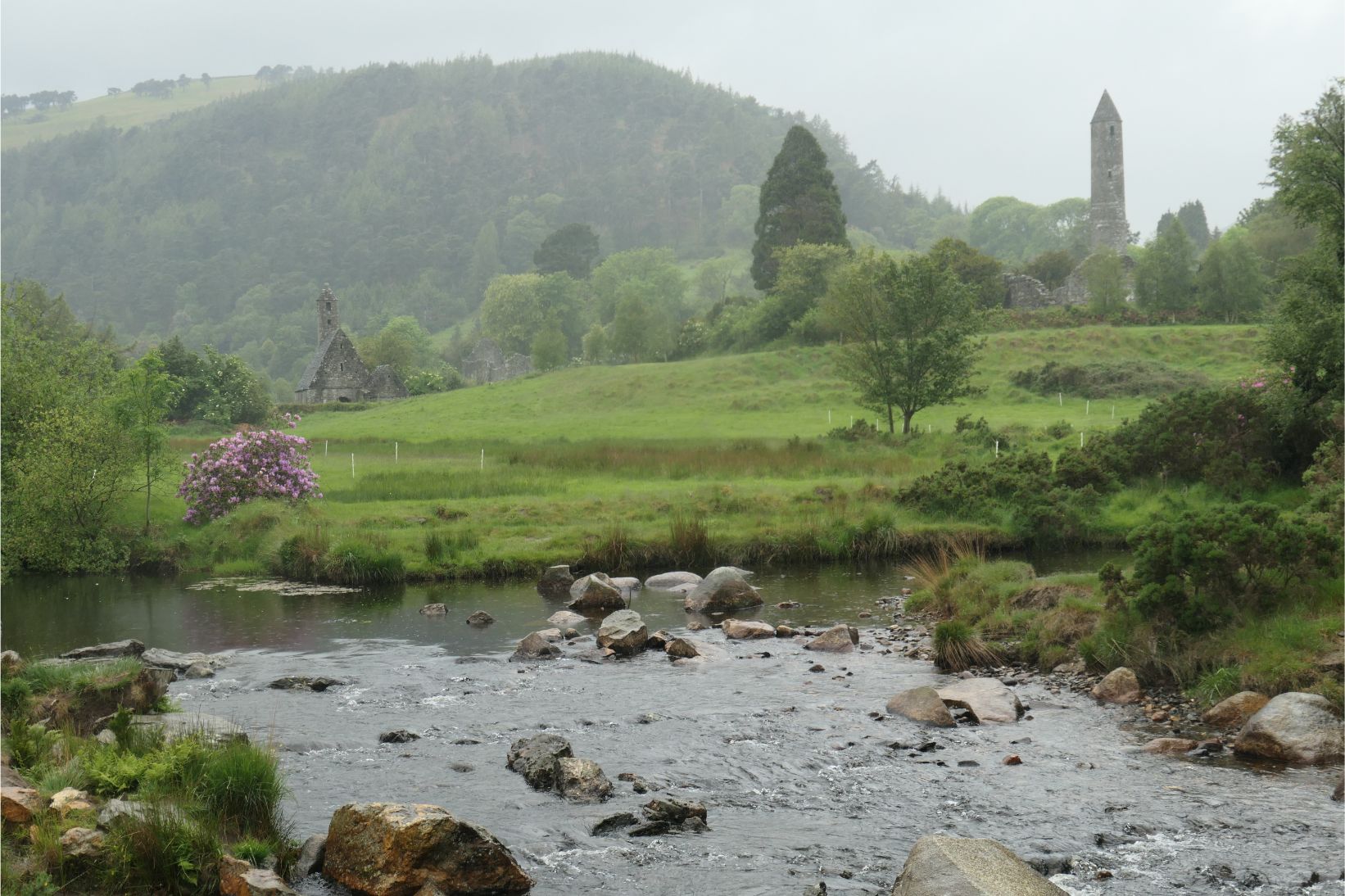
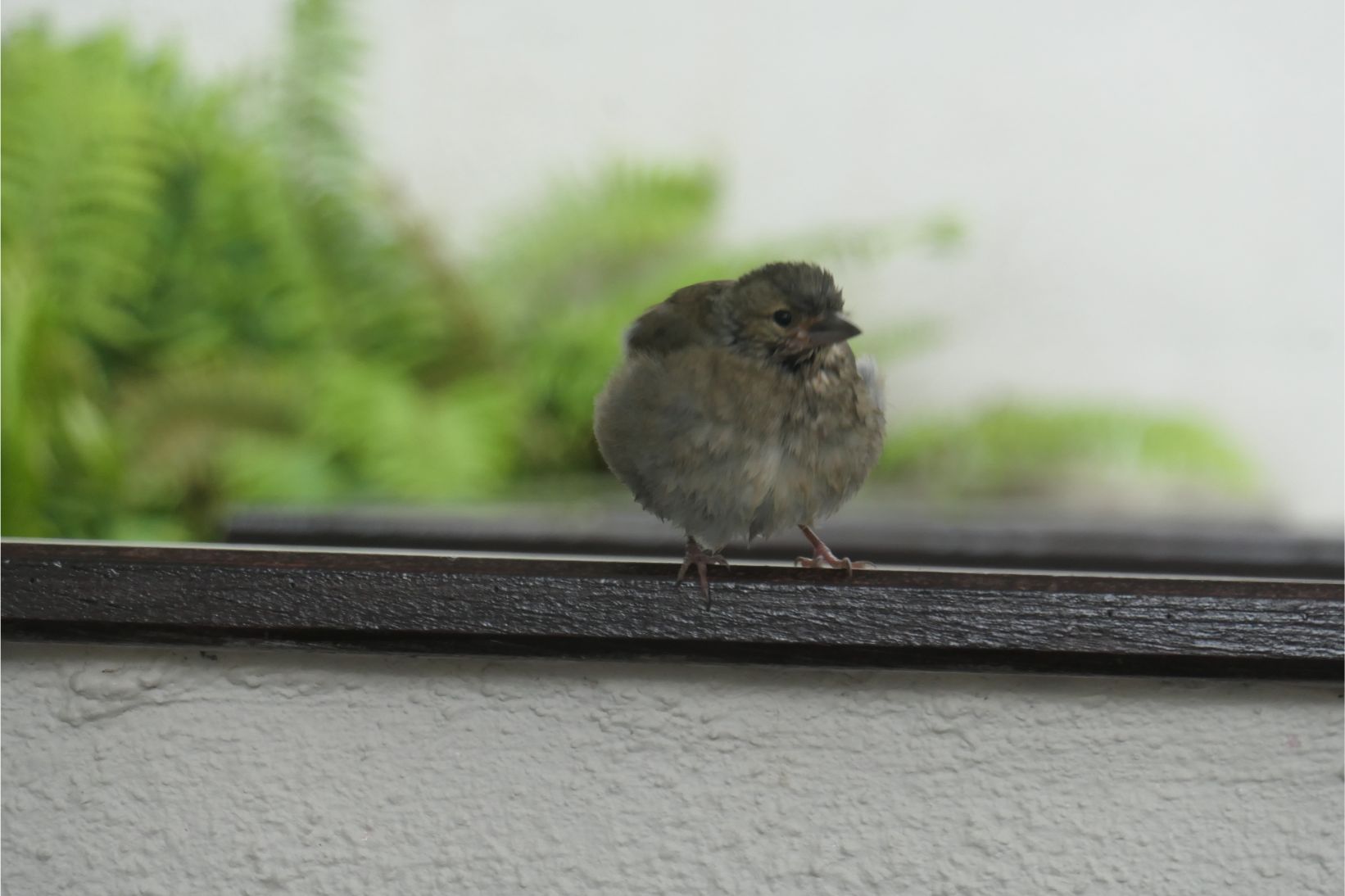

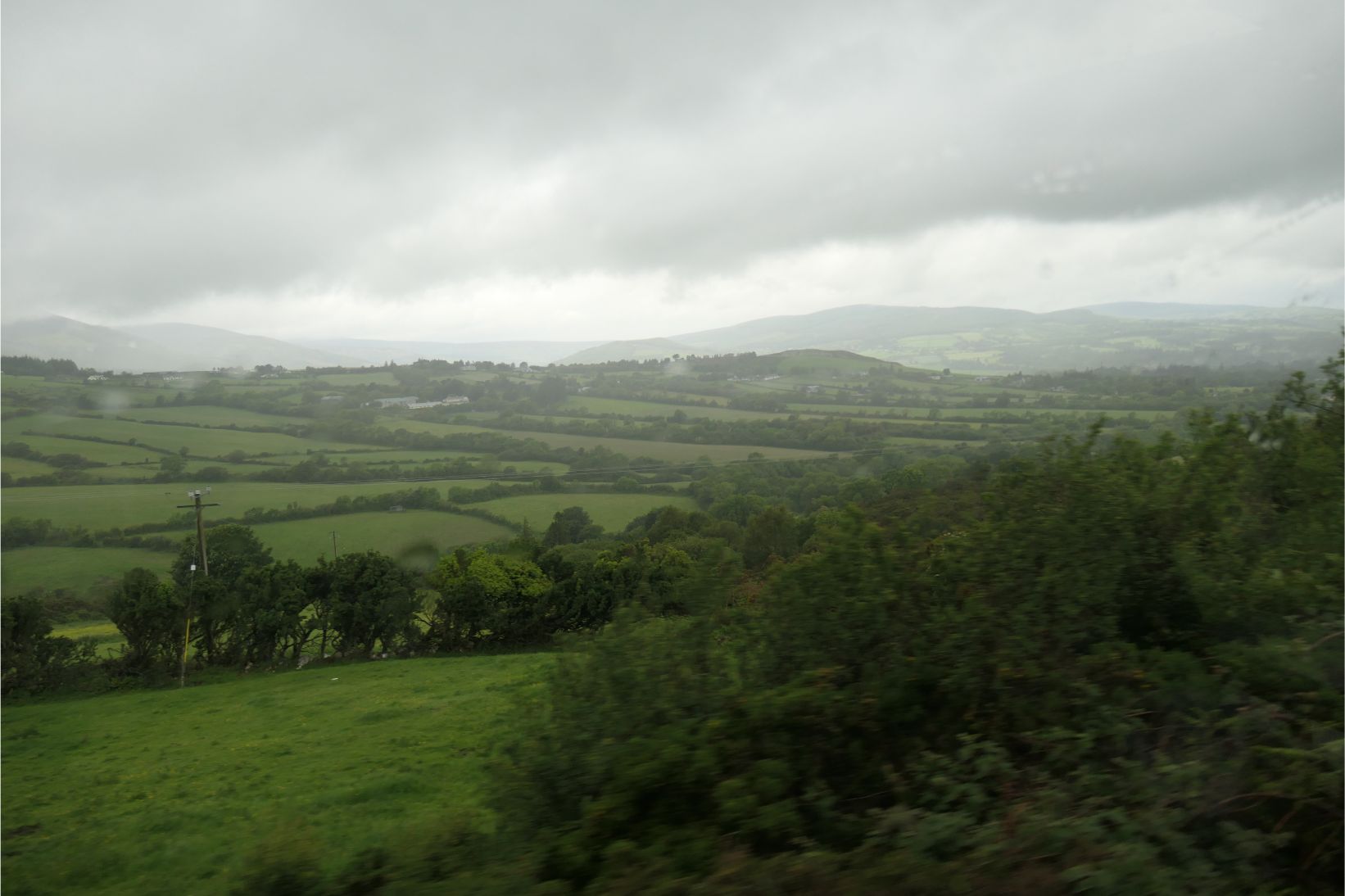
At Glendalough, about an hour’s drive south of Dublin, we visited the ruins of a Christian monastery which was founded in the sixth century. Only three structures are still standing today. The cathedral’s stone walls are still standing, but its roof and floor are long gone. It was raining heavily during our time there, but I stopped to note two of the gravestones inside the cathedral. One belonged to a man who died at the age of 102, and the other at the age of 106. It seems those monks must have discovered the fountain of youth somewhere out there in those mystical mountains. Not a drop of the rain penetrated the interior of the nearby church, with its roof and walls still intact 900 years after it was built. The 30-metre high Round Tower is the most impressive of the buildings. It, too, is largely intact. The entry doorway is several metres above the ground, requiring the monks to use a wooden ladder to gain entry.
The site of the monastery is picturesque, with a stream gently flowing past the ruins and a leafy green forest nearby. In more recent times, relatively speaking, the grounds have been used as a burial ground. Many of the grave sites have fallen into disrepair, but they give a strong indication that Glendalough always has been, as still is, a very spiritual place.
Upon our return to Dublin city we walked down to Trinity College to visit the famous Long Room in the Library and the fabled Book of Kells, which is possibly Ireland’s most precious cultural artefact. We queued for a time in the rain to enter, but it was worth doing just to see the book. It is an illuminated manuscript containing the four gospels of the New Testament, created by monks over a thousand years ago. There are over 300 folios which comprise the book. The monks performed the roles of scribes and illustrators. The text was written in Latin on calfskin vellum. It is a stunning work of medieval craftsmanship. Two folios of the book are open beneath a glass case for visitors to examine. I was surprised by how small the book was.
Beyond the Book of Kells was the Long Room of Trinity College Library. This 65-metre long room was built during the early 1700s, and today houses about 200,000 of the library’s oldest books. Some of the books are housed on very high shelves, so long ladders are on hand to provide access to anyone brave enough to scale them. A number of other important historical and cultural documents and artefacts are housed in the Long Room. Unfortunately the number of tourists viewing the Long Room led to a good deal of congestion in there, so we decided to leave and get away from the crush. Nevertheless, we’d witnessed two different aspects of Irish medieval monastic life on the same day, so we were well satisfied.
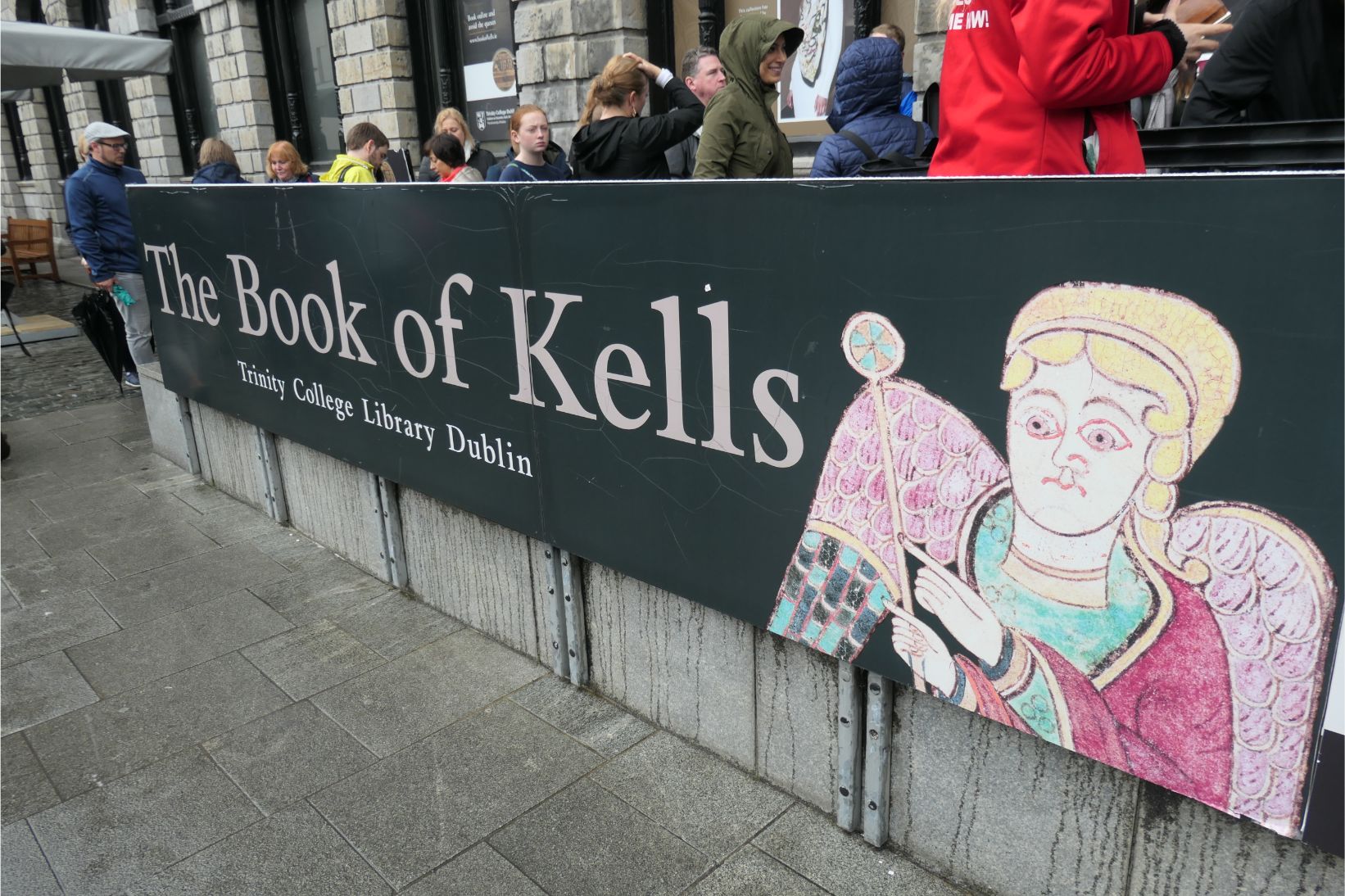


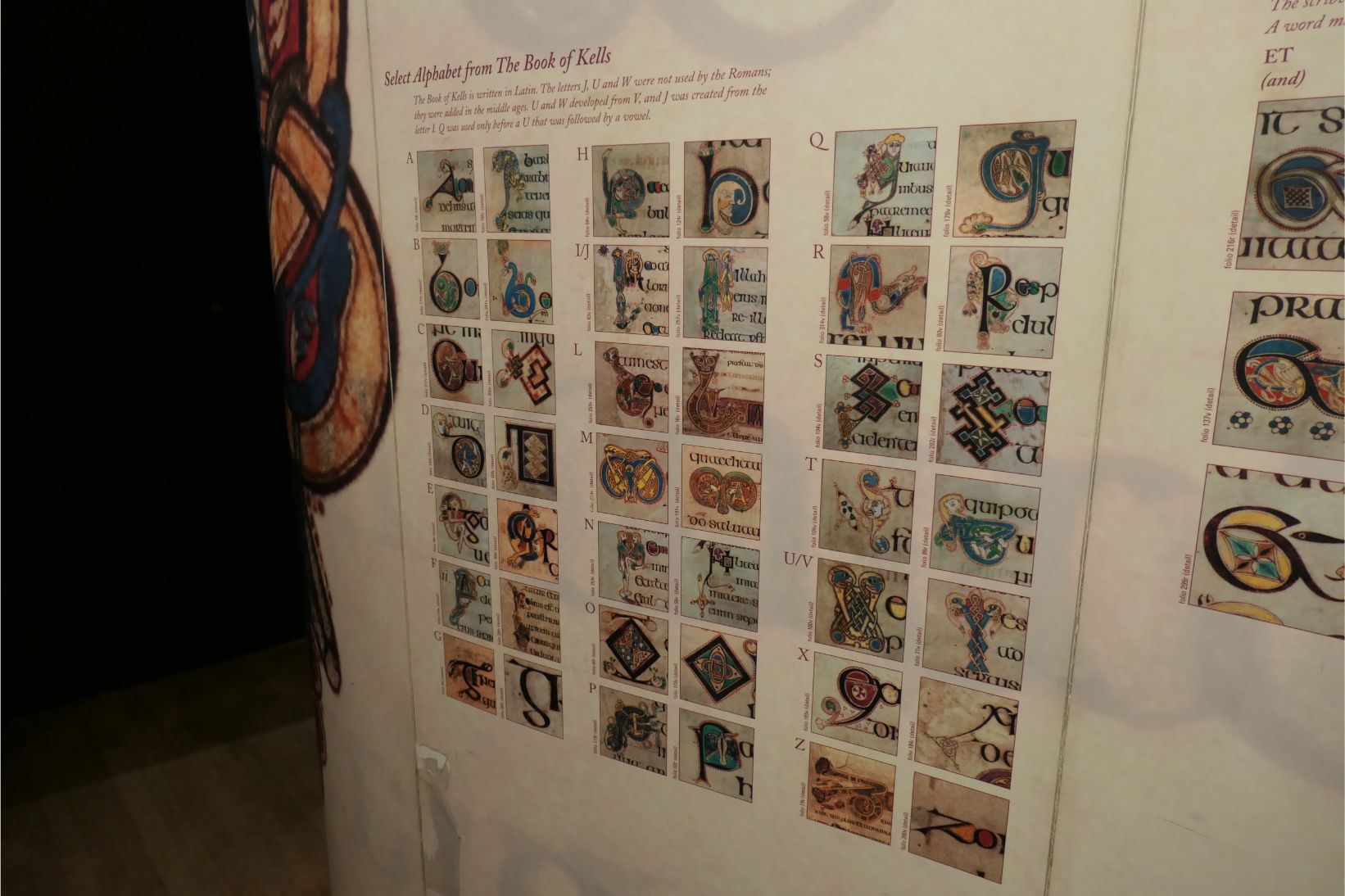
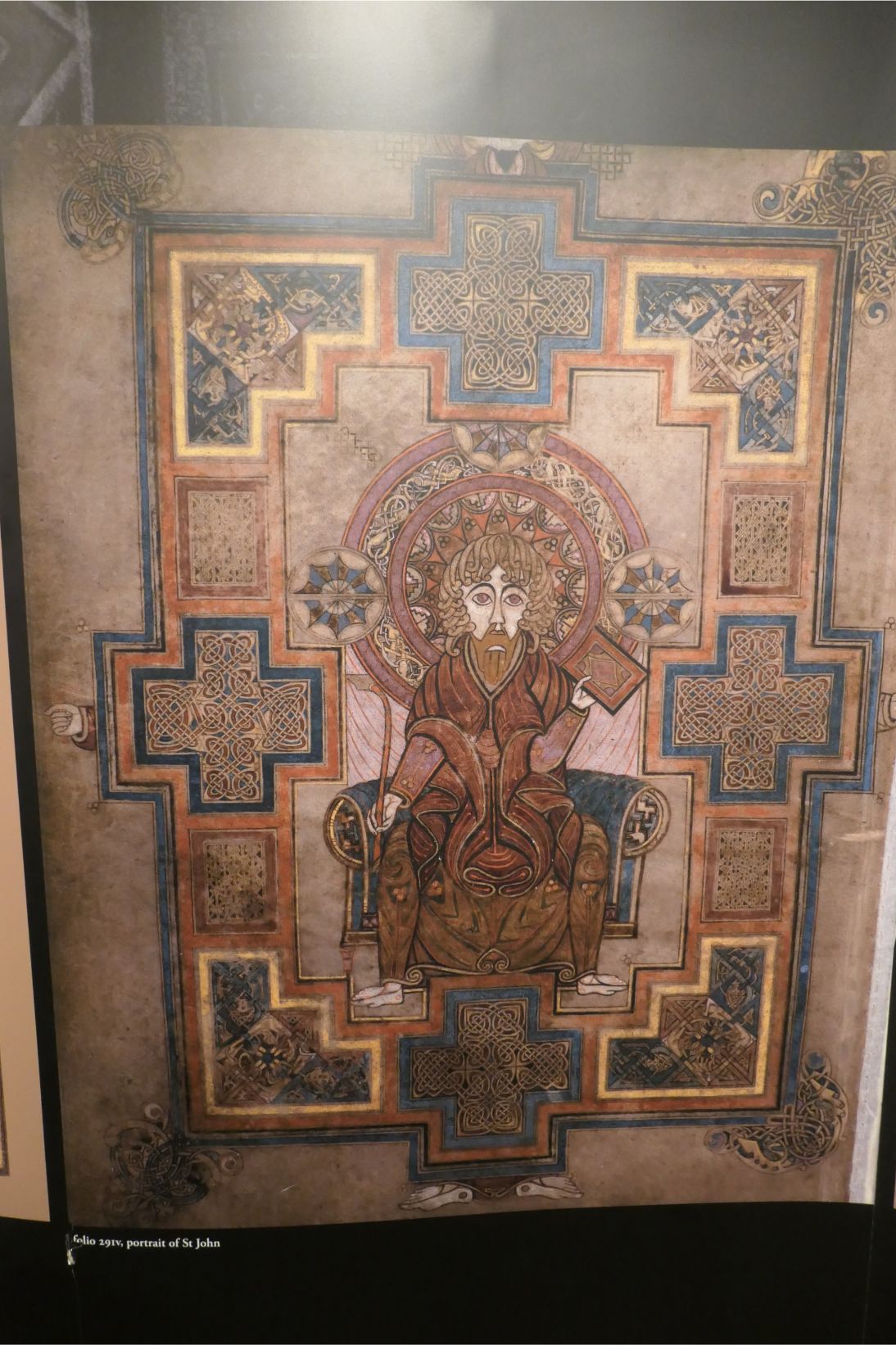





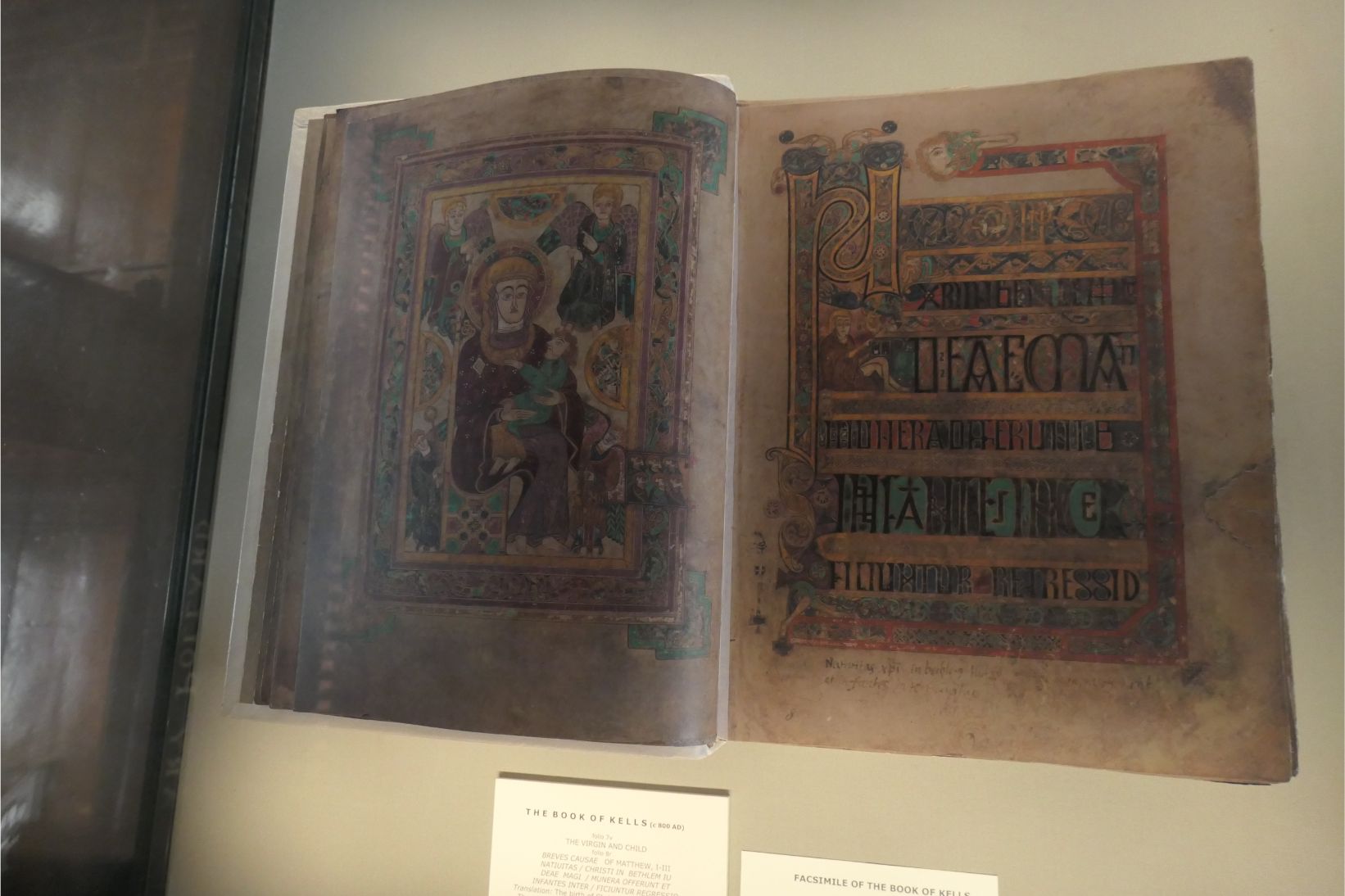

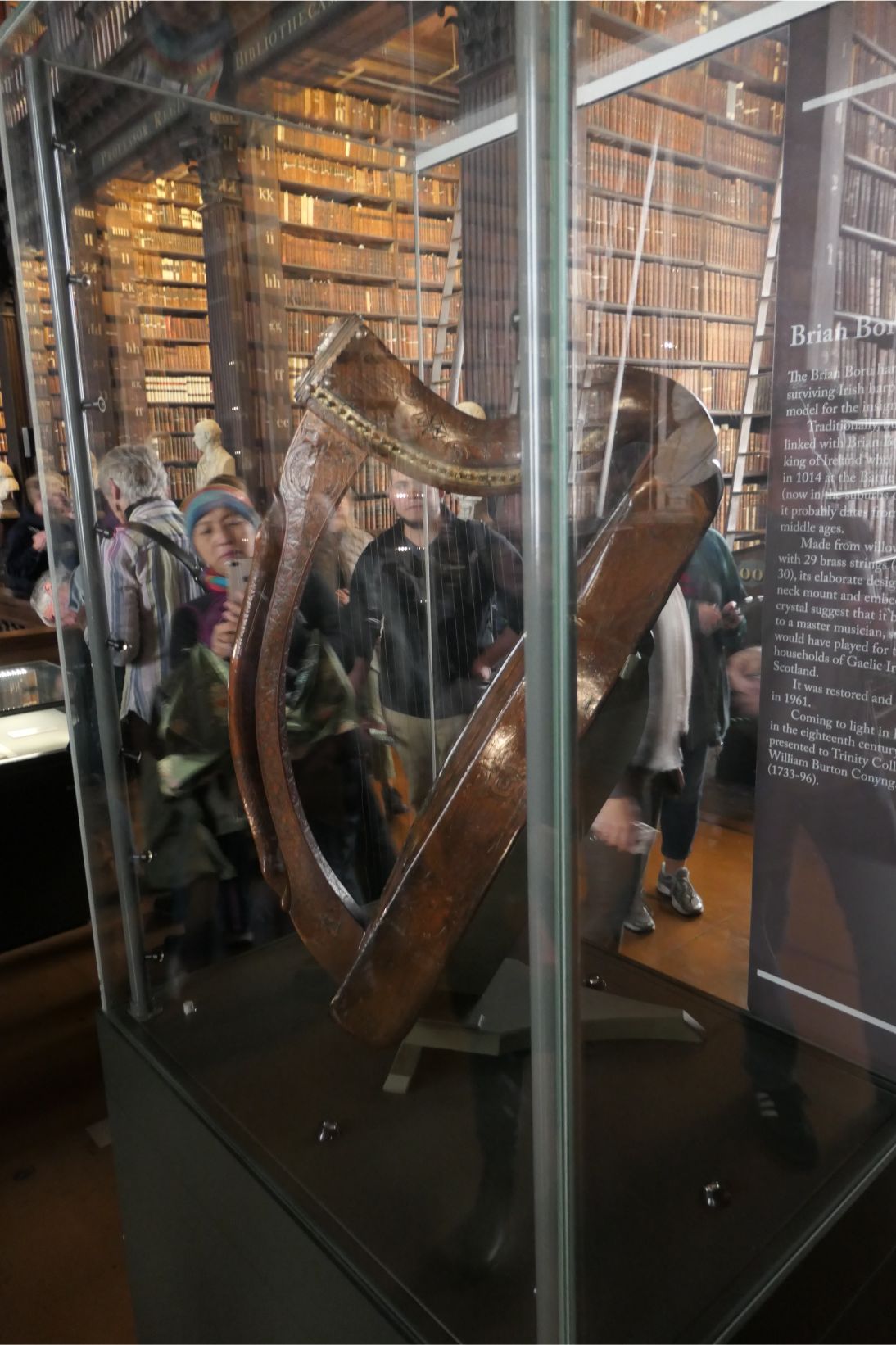




Hi Gary, beautiful post. My Mom and I visited Ireland in 2015 and I’ve never forgotten the feel of the place. I’m glad you had a better experience with the book of Kells than we did, the crowd was so unorganized it was hard to get close to the main attraction. We finally went upstairs and discovered the long room which for me – a librarian – was the best thing ever. Great photos!
LikeLiked by 1 person
Hi Librarylady. Thanks for the kind words. Ireland, for me, was also memorable. It was a lifelong dream come true to visit that beautiful country. I’m a book lover too, having taught in schools for 41 years, including two years as a teacher librarian, authored books for children, and also having been an avid reader since I was very young. The sense of awe I felt when visiting the Trinity College library will stay with me all my days. Hope you are staying well during these very strange times. Best wishes from Melbourne, Australia 🙂
LikeLike
Yes, another book lover. I have a section in my blog devoted to cool libraries around the world. One of my very first posts was on the Trinity College Library. My husband has a children’s book that was in the process of being published when this plague brought everything to a stop. Hopefully not too much longer.
LikeLiked by 1 person